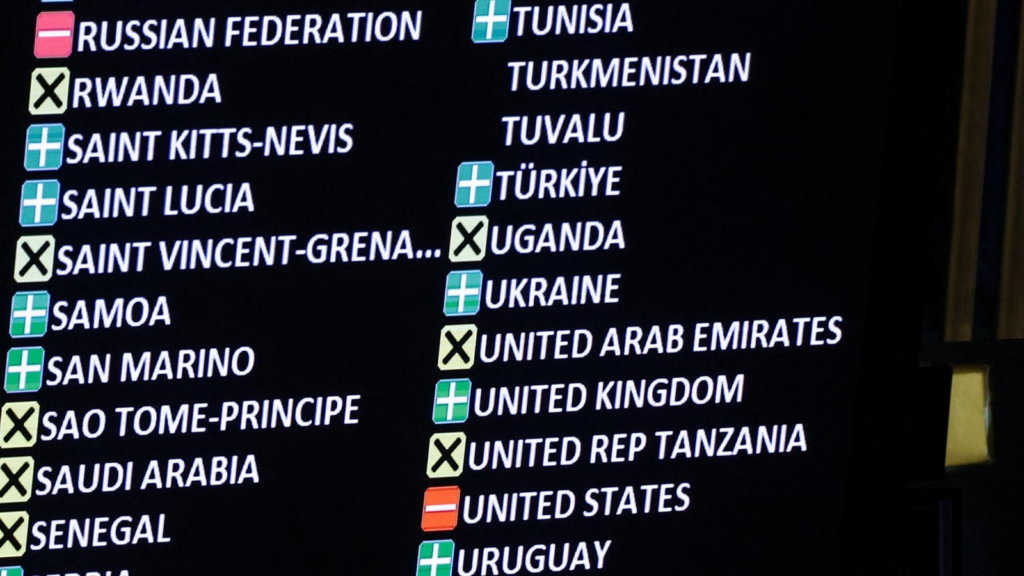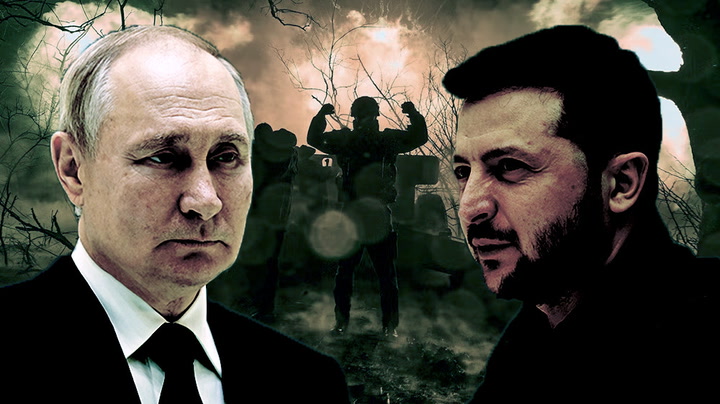The United States and Ukraine are on the brink of finalizing a controversial minerals deal that could reshape not only Kyiv’s economic future but also the geopolitical arena of the Russia-Ukraine war.
U.S. President Donald Trump confirmed that Ukrainian President Volodymyr Zelensky is expected to visit the White House “this week or the next” to sign the agreement, which has become a major point of contention between the two leaders.
But with no security guarantees included in the deal, has Zelensky been backed into a corner, effectively paving the way for a Russian victory? And what does this mean for NATO’s broader security framework?
The Minerals Deal.
The proposed agreement between the U.S. and Ukraine involves Washington receiving a significant share—50%—of Kyiv’s future revenues from critical minerals and natural resources. In exchange, Ukraine will receive military equipment and continued U.S. support for its war efforts against Russia.
However, the absence of security guarantees has raised eyebrows. Unlike previous American assistance, which came with firm commitments of military aid and diplomatic backing, this agreement merely offers economic compensation to the U.S. for its past aid contributions. In other words, Ukraine gets weapons but no long-term assurance of protection, leaving it vulnerable should American interests shift.
Trump’s remarks further complicated matters, as he remained ambiguous about whether the aid would be sustained indefinitely. “Shipments could go forward for a while, maybe until we have a deal with Russia,” he said, suggesting that U.S. support might have an expiration date that depends on diplomatic negotiations rather than Ukraine’s security needs.
The Evolution of the Minerals Agreement
The idea for a minerals deal was first floated by Zelensky himself in his “victory plan” presented to Trump last September. The objective was to provide a solid economic reason for Washington to continue its security guarantees to Ukraine. However, the latest draft, pushed by the U.S., omits any security commitments while demanding a large cut of Ukraine’s natural wealth—terms that many in Kyiv view as extortionate.
Zelensky initially rejected the offer, arguing that it would impose a massive financial burden on future generations of Ukrainians without guaranteeing their security. But after weeks of intense negotiations, Ukraine’s deputy prime minister, Olha Stefanishyna, indicated on social media that a deal was near.
Yet, reports indicate that even the revised deal remains far from what Ukraine initially sought. It was revealed that while the updated terms may be marginally more favorable, they still exclude the security guarantees that Kyiv has desperately requested.

Trump’s Business First, Security Second!
Perhaps the most unsettling aspect of the minerals deal is Trump’s willingness to explore similar agreements with Russia. Speaking from the Oval Office, he expressed interest in securing critical minerals from Russian territory as well.
Russia Dangles A Counteroffer
In what appears to be a calculated message to Washington, Russian President Vladimir Putin extended an open invitation for American businesses to invest in Russia’s resource-rich territories. Speaking to Russian state television on Monday, Putin hinted at lucrative opportunities, including mining rare earth metals—even in Russian-occupied Ukraine
According to Putin, Russia possesses significantly larger reserves of rare earth metals than Ukraine. The offer was not limited to rare earth mining; Putin also suggested that U.S. companies could reap substantial profits by participating in aluminium production in Siberia.
The Resource War
Kyiv estimates that around 5% of the world’s critical raw materials are located in Ukraine, making the country a key player in the global minerals market. Among its vast reserves are:
—Graphite: 19 million tonnes of proven reserves, placing Ukraine among the top five global suppliers.
—-Lithium: A third of Europe’s lithium deposits, a crucial component in battery production.
—Titanium: 7% of global titanium production before the war.
—Rare Earth Metals: Essential for military technology, electronics, and renewable energy.
However, since Russia’s invasion, a significant portion of these mineral-rich territories has fallen under Moscow’s control. Ukraine’s Economy Minister Yulia Svyrydenko estimates that resources worth $350 billion remain in occupied territories.
Russia, meanwhile, also boasts vast rare earth metal reserves but has yet to fully develop them. By enticing U.S. firms to invest in Russian-controlled extraction, Moscow is likely aiming to shift economic alliances while tightening its grip on global mineral markets.
Why The U.S. Wants In?
The U.S. push for a minerals deal with Ukraine is part of a broader strategy to reduce reliance on China, which currently dominates 75% of global rare earth production, according to the Geological Investment Group.
Tensions between Washington and Beijing over critical minerals have escalated in recent years. In December, China imposed a fresh ban on exporting certain rare earth metals to the U.S., following a similar restriction the previous year. With mineral security emerging as a key geopolitical battleground, Washington’s eagerness to secure resources—whether from Ukraine or elsewhere—is hardly surprising.

U.S. Aligns With Russia At The UN
Further, marking a dramatic turn in U.S. foreign policy, the Trump administration has twice voted in alignment with Russia at the United Nations, signaling a departure from America’s previous stance on the Ukraine war.
The first instance came at the UN General Assembly (UNGA) in New York, where the U.S. voted against a European-drafted resolution condemning Russia’s invasion and affirming Ukraine’s territorial integrity—placing itself in the same camp as Russia, North Korea, and Belarus.
Then, at the UN Security Council, Washington introduced its own resolution, calling for an end to the conflict but notably omitting any criticism of Russia. While the resolution passed, key American allies, including the UK and France, abstained after their attempts to introduce amendments were blocked.
A Transatlantic Rift on Full Display
The UN votes unfolded against the backdrop of French President Emmanuel Macron’s visit to Washington, as he sought to bridge growing divisions with President Trump over Ukraine. The diplomatic rift will further be under the lens on Thursday when British Prime Minister Sir Keir Starmer meets with Trump in an effort to recalibrate U.S.-UK relations.
Trump’s White House has increasingly distanced itself from traditional European allies, fostering closer ties with Moscow and raising doubts about America’s long-term commitment to European security. This shift was evident as U.S. diplomats at the UNGA pushed for a resolution mourning the loss of life in the “Russia-Ukraine conflict” without assigning blame—an approach that sharply contrasted with Europe’s more explicit condemnation of Russian aggression.
Ukrainian Deputy Foreign Minister Mariana Betsa did not mince words, stating, “We need to reconfirm that the aggression should be condemned and discredited, not rewarded.”
Despite European efforts, the UNGA resolution condemning Russia passed with 93 votes, but in an extraordinary move, the U.S. did not abstain—it actively voted against it. The U.S. found itself on the same side as Russia, North Korea, Israel, Sudan, Belarus, Hungary, and 11 other nations, with 65 countries abstaining.
American Lawmakers Sound the Alarm
The unexpected alignment with Moscow did not go unnoticed in Washington. Republican Senator John Curtis voiced his dismay, writing on X, “I am deeply troubled by this vote, which put us on the same side as Russia and North Korea. These are not our friends. This posture is a dramatic shift from American ideals of freedom and democracy.”
Former House Speaker Nancy Pelosi echoed these concerns, calling the vote “contrary to our long-standing support of democracy.”
Meanwhile, Ukraine’s former Minister of Economy, Tymofiy Mylovanov, dismissed the shift as anything but an accident. “This is no longer just rhetoric or political theatre,” he said
Rarely has the U.S. been so openly at odds with its European allies. Since the war began three years ago, the Security Council has remained largely ineffective due to Russia’s veto power. The UNGA has become the primary global platform for addressing the conflict, though its resolutions lack legal enforceability.

Has Putin Won?
With Washington’s stance shifting and European allies visibly frustrated—has Vladimir Putin effectively reshaped the global order to his advantage? If the U.S. continues down this path, it may signal a geopolitical realignment with profound consequences for Ukraine, NATO, and the broader Western alliance.
For Ukraine and its allies, this raises serious concerns. Could Trump be using the minerals deal as a stepping stone to diplomatic negotiations with Russia, at the expense of Ukraine’s sovereignty? If so, NATO’s security could be compromised, as Washington’s commitment to Ukraine wavers in favor of economic pragmatism.
What This Means for NATO and the War’s Future
The implications of this deal go beyond Ukraine. If Kyiv is forced to cede half of its mineral revenues without ironclad security assurances, it sets a troubling precedent for other U.S. allies. NATO, already struggling to maintain cohesion in the face of Russian aggression, might find its eastern flank more vulnerable than ever.
Moreover, Trump’s approach signals a potential shift in U.S. foreign policy—one where economic interests take precedence over military commitments. While this may align with his “America First” philosophy, it could leave NATO allies pretty much out in the cold.
The Last Bit
Zelensky, caught between a rock and a hard place, faces the difficult decision of accepting a deal that ensures Ukraine’s survival in the short term but leaves it strategically exposed in the long run. Meanwhile, Putin may be watching with satisfaction as Ukraine’s Western support becomes increasingly transactional, rather than a strong security guarantee.
As the world waits for the final signing of the agreement; Has Zelensky folded under pressure, inadvertently giving Putin an upper hand? And if so, how will this reshape the future of NATO’s security and the global order?

